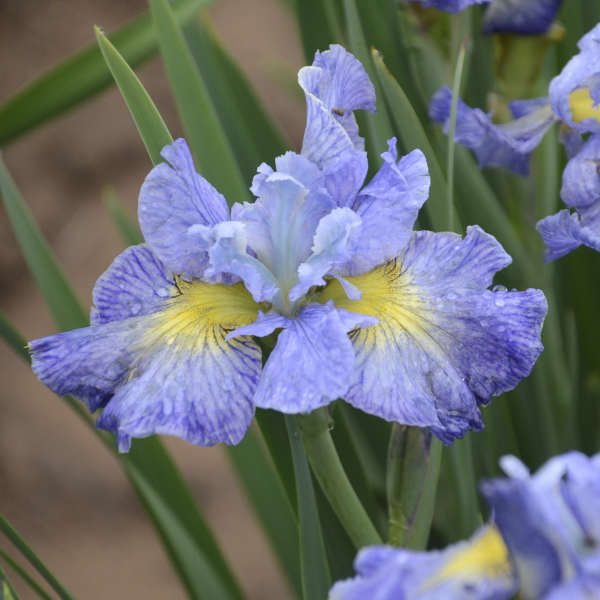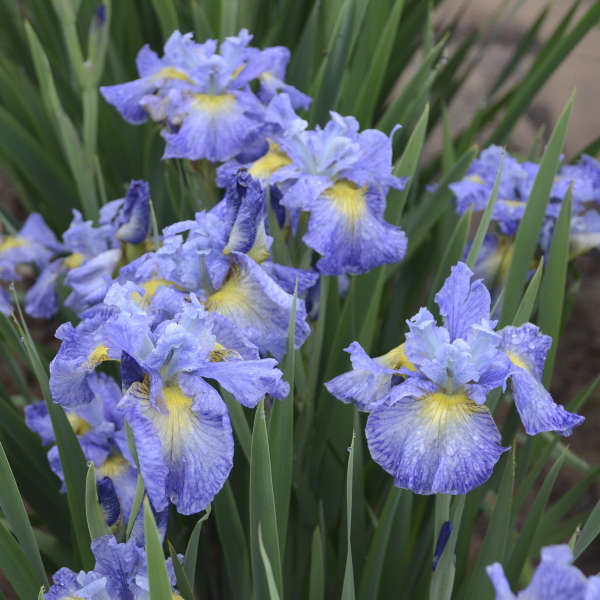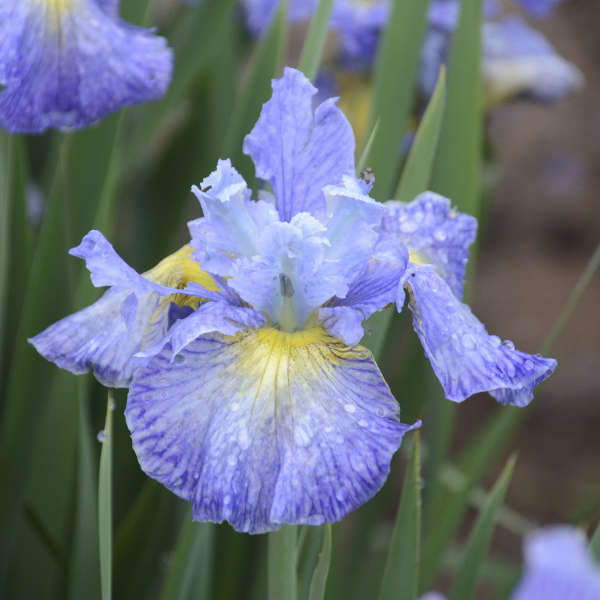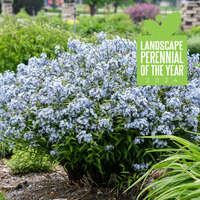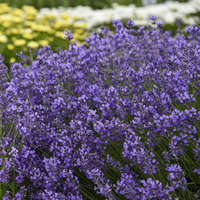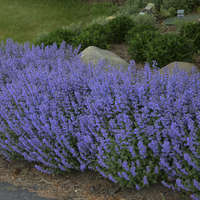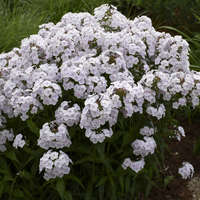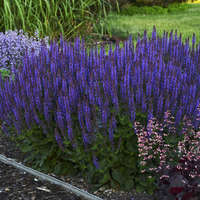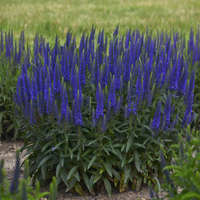Iris sibirica 'Cape Cod Boys'
Common Name: Siberian Iris
Just like the famous shore community of Cape Cod, this Siberian Iris will make you think of beaches and the ocean. Periwinkle blue flowers have darker blue veining that intensifies into a defined pattern at the end of the petals. Prominent clear lemon yellow signals complete the look. This variety blooms for a long time. When it is not flowering, the attractive, wide blue-green leaf blades will catch your eye.
Siberian irises are haled for their elegant, delicate flowers and disease resistance. They perform admirably in the sunny to partially shady garden, but need plenty of water throughout the season to continue looking their best. In naturalized settings, they are particularly effective around water features. They can also be grown under Black Walnut trees since they are not effected by juglone. Siberian Irises bloom before Japanese Irises but after Tall Bearded Irises.
Grade #1 Bare Root |
Grade #2 Bare Root |
